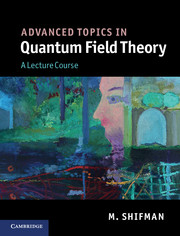Introduction
Published online by Cambridge University Press: 05 June 2012
Summary
Presenting a brief review of the history of the subject. — The modern perspective.
Quantum field theory (QFT) was born as a consistent theory for a unified description of physical phenomena in which both quantum-mechanical aspects and relativistic aspects are important. In historical reviews it is always difficult to draw a line that would separate “before” and “after.” Nevertheless, it would be fair to say that QFT began to emerge when theorists first posed the question of how to describe the electromagnetic radiation in atoms in the framework of quantum mechanics. The pioneers in this subject were Max Born and Pascual Jordan, in 1925. In 1926 Max Born, Werner Heisenberg, and Pascual Jordan formulated a quantum theory of the electromagnetic field, neglecting polarization and sources to obtain what today would be called a free field theory. In order to quantize this theory they used the canonical quantization procedure. In 1927 Paul Dirac published his fundamental paper “The quantum theory of the emission and absorption of radiation.” In this paper (which was communicated to the Proceedings of the Royal Society by Niels Bohr), Dirac gave the first complete and consistent treatment of the problem. Thus quantum field theory emerged inevitably, from the quantum treatment of the only known classical field, i.e. the electromagnetic field.
Dirac's paper in 1927 heralded a revolution in theoretical physics which he himself continued in 1928, extending relativistic theory to electrons. The Dirac equation replaced Schrödinger's equation for cases where electron energies and momenta were too high for a nonrelativistic treatment.
- Type
- Chapter
- Information
- Advanced Topics in Quantum Field TheoryA Lecture Course, pp. 1 - 8Publisher: Cambridge University PressPrint publication year: 2012



